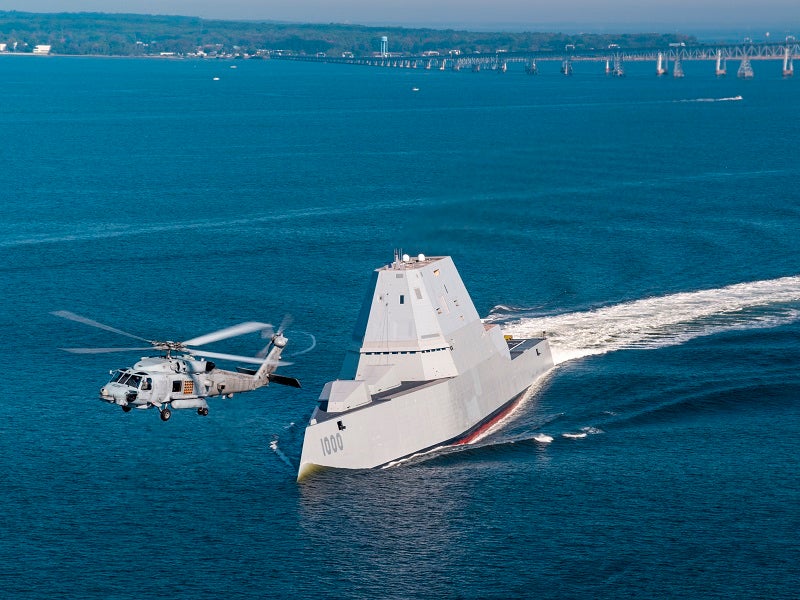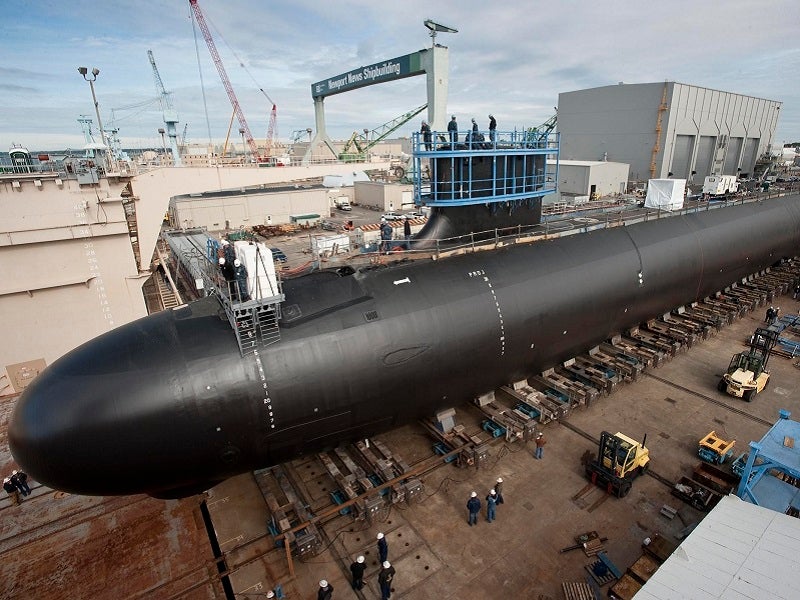
The senior-most officer in the US Navy (USN) has reiterated the call for warship manufacturing to increase as the service looks build a 355-vessel force, along with an additional 150 uncrewed platforms, as China continues its rapid modernisation programme.
The 355-ship goal for the USN was created by the administration of President Donald Trump in 2017, and persisted into the administration of President Joe Biden, as a means to combat China’s rise and renewed Russian activity. According to the US-based Center for Strategic and International Studies, in FY2022, the USN numbered 296 vessels as new arrivals were offset by the departure of 15 hulls, including ten ahead of schedule.
China and Russia are the USN’s most pressing challenges at present, with the former looking to expand its sphere of influence outside the South and East China Seas and further into the western Pacific, while Russian activity in the Atlantic is returning to Cold-War-era levels amid a changing global order.
China’s own warship manufacturing has outstripped that of the US in recent years, putting out 28 vessels in 2021 alone. Its naval arm, the People’s Liberation Army Navy (PLAN), is understood to number around 355 warships at present and expected to increase to well beyond 400 by 2030.
Speaking on 25 August at a Heritage Foundation briefing into USN plans, chief of naval operations Admiral Michael Gilday said the rate of warship production would need to increase, stating that it would take “20 budget cycles” to increase the size of the force to 505 vessels.
Further, Gilday said one of his goals is to “optimise” surface ship production, adding that “we need to get to three destroyers a year instead of 1.5 [at present]”.
Programme cuts and cancellations
Although US warship production is attempting to gear up to meet the 355-ship goal, the curtailing of programmes such the DDG 1000 Zumwalt-class guided-missile destroyers, which saw a fleet of just three built from a planned 32, and the mixed success of the Littoral Combat Ship have caused significant issues for the USN.

The trusted Oliver Hazard Perry class of guided-missile frigates (FFGs) were finally decommissioned in the mid-2010s without replacement, before the decision was taken in 2020 to build a new series of FFGs based on an Italian design, later dubbed the Constellation class (FFG 62).
The contract for the first batch of ten Constellation-class frigates was awarded in 2020, and in May this year, the USN exercised the second contract option for the third ship, USS Chesapeake (FFG 64), to be built by Fincantieri Marinette Marine.
Construction of the first-in-class USS Constellation was still to get underway in May, pending the completion of the critical design review stage.
Meanwhile, the cancellation of the CG(X) programme in 2010, which would have replaced the ageing 22-strong Ticonderoga class of guided-missile cruisers, necessitated the development of a ‘Flight III’ variant to the ubiquitous Arleigh Burke guided-missile destroyers. Production of the Flight III variant began in 2016.
Submarine successes
Unlike surface ship manufacturing, submarine build programmes had a 20-year pipeline that was committed to turning out two new Virginia-class nuclear attack submarines (SSNs) and one Columbia-class ballistic missile submarine each year, a production plan that Gilday was keen to see replicated among other yards.
“The submarine building is an exemplar… I would like to get to that same place with our production line with [surface warships] so that our numbers are fairly stable,” Gilday told guests at the Heritage Foundation event.
The head of the USN’s submarine build programmes said recently that the intention would be to reduce the manufacturing time of a Columbia-class submarine to 78 months, down from 84 months currently.

Elsewhere, Gilday reiterated the timeline for the planned introduction of hypersonic missile systems among the USN’s surface and subsurface fleet. Together with the US Army, the USN is jointly developing a hypersonic missile capability, which would be fielded on the Zumwalt-class guided-missile destroyers by 2025 and the Virginia-class SSNs by 2028.
Both China and Russia appear to have successfully demonstrated hypersonic missile capabilities, with such weapons potentially able to defeat existing ballistic and high-altitude missile defence systems operated by the US and NATO countries.




